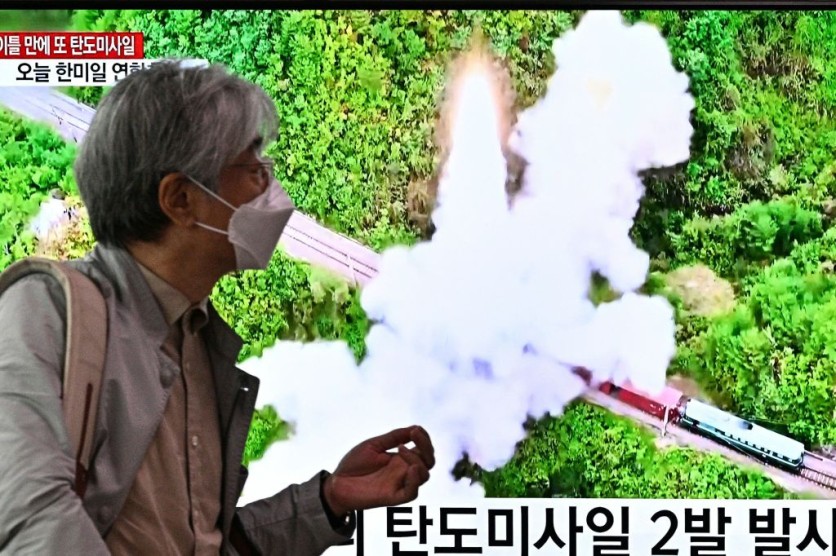North Korea fired a short-range ballistic missile toward its eastern waters and flew fighter jets close to the South Korean border, inflaming already heightened tensions brought on by the North's recent barrage of nuclear tests, according to a report by the AP on Friday, Oct. 14.

170 Artillery Rounds
Approximately 170 artillery rounds were fired by North Korea, according to the South Korean military, from eastern and western coastal areas close to the border, and the shells landed inside maritime buffer zones that the Koreas formed by a 2018 military agreement aimed at easing tensions.
According to experts, North Korea's nuclear tests are a provocation test for the United States and other countries to acknowledge it as a nuclear power, removing economic sanctions and providing other concessions.
Even though none of the artillery shells landed inside South Korean territorial waters, the South's Joint Chiefs of Staff characterized the firings as a blatant violation of the 2018 agreement, which established buffer zones along land and maritime boundaries as well as no-fly zones above the border.
As North Korea takes advantage of the distraction provided by Russia's war on Ukraine to ramp up its weapons development and put more pressure on the US and its Asian allies, Friday's ballistic launch brought the total number of missile demonstrations it has conducted this year to a record high.
AP noted that the tests were the first known tests of North Korea's weaponry after it fired 12 ballistic missiles over two weeks until October 9 in what it claimed as simulated nuclear strikes on American and South Korean targets.
Read Also : North Korea's New Defense Law to Maintain Country's Nuclear Technology-No More Sharing of Nukes?
Unilateral Sanctions
For the first time in five years, South Korea levied unilateral sanctions on the North on Friday in response to North Korea's escalating testing and hostility.
The sanctions were directed at 15 North Koreans and 16 organizations that were alleged to be involved in illegal activities intended to fund North Korea's nuclear and missile programs.
The KN-23 weapon, which is based on the Russian Iskander missile, went on an "irregular" trajectory, according to Japanese Defense Minister Yasukazu Hamada.
The missile was estimated to have gone 650 to 700 kilometers (403-434 miles) at a maximum height of 50 kilometers (30 miles) before coming to rest in the waters between the Korean Peninsula and Japan.
The US's commitment to the protection of South Korea and Japan remains "ironclad," according to a statement from the US Indo-Pacific Command, which also noted that the North Korean launch did not represent an immediate threat to America's military interests.
North Korea's Kim Jong Un reportedly oversaw the testing of long-range cruise missiles on Thursday, which he described as a successful demonstration of his military's growing capacity for nuclear attack and readiness for war.
The country has blasted over 40 ballistic and cruise missiles on more than 20 launch occasions this year, according to AP.
Related Article : Crypto's Collapse Threatens North Korea's Stolen Cryptocurrencies Amid Its Nuclear Tests
This year is owned by Tech Times
Written by Joaquin Victor Tacla
ⓒ 2026 TECHTIMES.com All rights reserved. Do not reproduce without permission.




